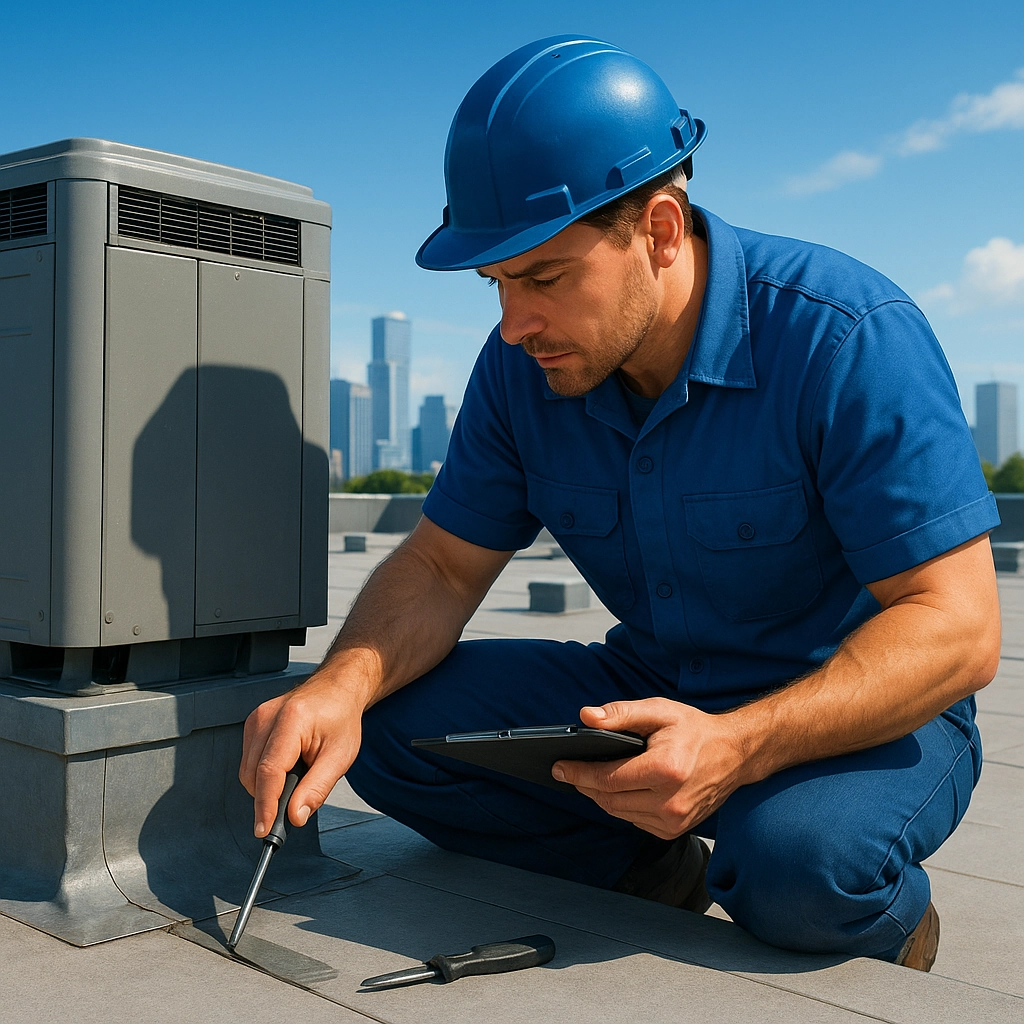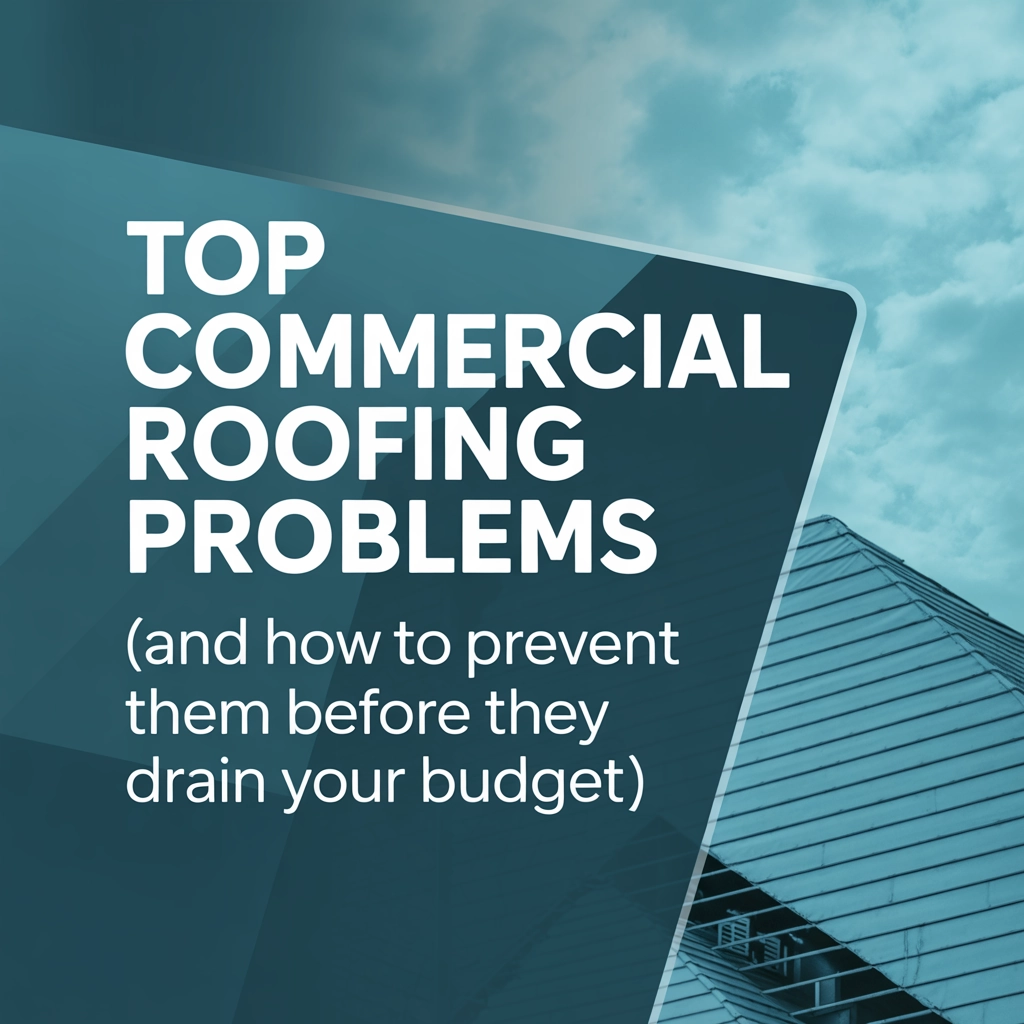The Hidden Costs of Commercial Roofing Problems
When it comes to commercial buildings, the roof is often the most overlooked component—until something goes wrong. As a business owner or property manager, you're juggling countless responsibilities, and your roof might not be top of mind until that dreaded moment when water starts dripping onto expensive equipment or inventory.
The truth? Commercial roofing problems can quickly escalate from minor annoyances to budget-destroying emergencies. According to industry data, addressing a commercial roof issue early can cost 90% less than waiting until it becomes a full-blown crisis. That's not just a repair bill—it's potential business interruption, inventory damage, and even tenant complaints.
At Best Roofing Now, we've seen it all. So we've compiled this comprehensive guide to the most common commercial roofing problems we encounter—and more importantly, how you can prevent them before they drain your maintenance budget.
1. Roof Leaks and Water Infiltration
Leaks are the number one enemy of commercial roofs, and for good reason. Water is relentless in finding even the smallest entry point, and once inside, it can cause extensive damage to structural components, insulation, and interior finishes.
Common Causes:
- Deteriorated flashing around roof penetrations
- Membrane punctures or tears
- Aging and cracked sealants
- Failed expansion joints
- Improper installation around HVAC units and other roof-mounted equipment
Prevention Strategies:
- Schedule bi-annual professional inspections – especially before and after extreme weather seasons
- Immediately address any visible damage to flashings or membranes
- Ensure proper sealing around all roof penetrations
- Install protective walkway pads around frequently accessed equipment
- Consider upgraded membranes with puncture-resistant technology for high-traffic roofs
"The most expensive leak is the one you don't know about until it's caused structural damage," says James Turner, Owner of Best Roofing Now. "A small investment in regular inspections saves thousands in potential repairs."

2. Ponding Water and Drainage Issues
On flat commercial roofs, water that remains standing for more than 48 hours (known as "ponding") is a serious concern. Not only does it accelerate membrane deterioration, but the weight can also cause structural stress and eventual failure.
Common Causes:
- Inadequate slope in roof design
- Clogged or insufficient drainage systems
- Settling of the building structure
- Compressed or damaged insulation creating depressions
Prevention Strategies:
- Ensure drains, scuppers, and downspouts remain clear of debris
- Install additional drainage solutions if ponding is a recurring issue
- Consider tapered insulation systems to create proper slope
- Implement a post-storm inspection protocol to identify drainage problems
- Apply specialized coatings designed to withstand ponding conditions
3. Membrane Deterioration and Material Failure
Commercial roofing materials aren't meant to last forever, but premature failure is often preventable. Whether you have a single-ply membrane (EPDM, TPO, PVC), modified bitumen, or built-up roofing system, understanding the specific vulnerabilities can help extend its service life.
Common Causes:
- UV radiation damage
- Chemical exposure
- Thermal cycling (expansion and contraction)
- Poor material quality
- Improper installation techniques
Prevention Strategies:
- Select roofing materials appropriate for your climate and building use
- Apply reflective coatings to reduce UV damage and thermal stress
- Ensure proper installation by qualified contractors
- Consider specified maintenance programs from the membrane manufacturer
- Document all chemical spills or exposures for warranty purposes
"Commercial roofing is not the place to cut corners on materials," notes James Turner. "The difference between standard and premium membranes might be pennies per square foot during installation, but years of additional service life."
4. Flashing and Penetration Failures
While the field of your roof covers the most area, it's typically the details—flashings around edges, corners, and penetrations—that fail first. These critical transition areas require special attention during both installation and maintenance.
Common Causes:
- Improper flashing installation techniques
- Missing counter-flashing
- Failing sealants around penetrations
- Mechanical damage from service personnel
- Metal fatigue and corrosion
Prevention Strategies:
- Inspect all flashings and penetrations quarterly
- Re-seal termination bars and penetrations at recommended intervals
- Install proper protection around all roof access points
- Use high-quality metal flashings appropriate for local climate conditions
- Implement a roof access protocol for all service personnel

5. Neglected Maintenance and Inspection Gaps
Perhaps the most preventable cause of commercial roofing problems is simply neglect. Without regular maintenance, minor issues inevitably become major headaches.
Common Causes:
- Lack of scheduled maintenance program
- Insufficient documentation of roof conditions
- Deferred repairs due to budget constraints
- Inadequate cleaning of drains and gutters
- Unauthorized modifications to roofing systems
Prevention Strategies:
- Implement a documented maintenance program with scheduled inspections
- Maintain a detailed roof history file with all repairs and modifications
- Clear debris from the roof surface and drainage systems quarterly
- Address minor repairs promptly before they escalate
- Partner with a reliable roofing contractor for ongoing maintenance
6. Energy Inefficiency and Insulation Problems
While not always visible like leaks, energy inefficiency represents a constant drain on your operational budget. Modern commercial roofing should contribute to your building's overall energy performance.
Common Causes:
- Wet or compressed insulation
- Thermal bridging through fasteners or gaps
- Dark surfaces absorbing heat
- Air leakage through roof assembly
- Outdated insulation materials with poor R-values
Prevention Strategies:
- Conduct infrared scans to identify wet insulation or thermal bridging
- Consider reflective roofing membranes or coatings to reduce heat absorption
- Evaluate insulation levels against current energy codes
- Seal all roof penetrations against air leakage
- Explore energy-efficient roofing options during replacement planning
"Many building owners don't realize how much their old roof is costing them in energy losses," explains James Turner. "The ROI on upgrading to an energy-efficient roofing system can be surprisingly quick when you factor in utility savings and potential rebates."
7. Storm Damage and Weather Events
While you can't prevent severe weather, you can prepare your commercial roof to better withstand nature's challenges and recover more quickly afterward.
Common Causes:
- Wind uplift damage to membranes and flashings
- Hail impacts on vulnerable materials
- Thermal shock from rapid temperature changes
- Ice dam formation in colder climates
- Flying debris puncturing membranes
Prevention Strategies:
- Choose roofing systems rated for your area's wind exposure
- Install hail-resistant membranes in prone regions
- Secure all roof-mounted equipment against wind events
- Implement a post-storm inspection protocol
- Maintain adequate drainage to prevent ice dam formation

Creating Your Commercial Roof Maintenance Strategy
The key to avoiding budget-draining roofing emergencies is a proactive maintenance strategy. Here's a simple framework to get started:
-
Documentation: Create a complete roof file with installation details, warranties, and repair history.
-
Scheduled Inspections: Implement bi-annual professional inspections plus quick checks after major weather events.
-
Preventive Maintenance: Address minor issues immediately before they escalate into costly problems.
-
Budgeting: Set aside funds annually for both routine maintenance and eventual replacement.
-
Trusted Partnership: Develop a relationship with a reputable commercial roofing contractor who understands your building.
At Best Roofing Now, we work with commercial property owners to develop customized maintenance programs that extend roof life while minimizing unexpected expenses. Our experienced team can help identify potential problems before they impact your bottom line.
The Bottom Line: Prevention Is Always Cheaper Than Reaction
The average commercial roof replacement can cost $10-15 per square foot—for a 20,000 square foot roof, that's a $200,000-$300,000 capital expense. Meanwhile, a well-maintained commercial roof can often reach or exceed its expected service life, sometimes by 25% or more.
Regular maintenance isn't just about avoiding leaks—it's about protecting your investment, controlling maintenance costs, improving energy efficiency, and providing a secure environment for your business operations.
Don't wait for water to find its way into your building. Contact Best Roofing Now today for a comprehensive commercial roof inspection and customized maintenance plan that will help you avoid these common roofing problems before they drain your budget.
Ready to take control of your commercial roofing maintenance? Schedule your professional roof inspection today by calling Best Roofing Now or requesting an instant roof estimate online.









